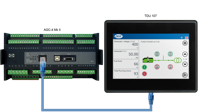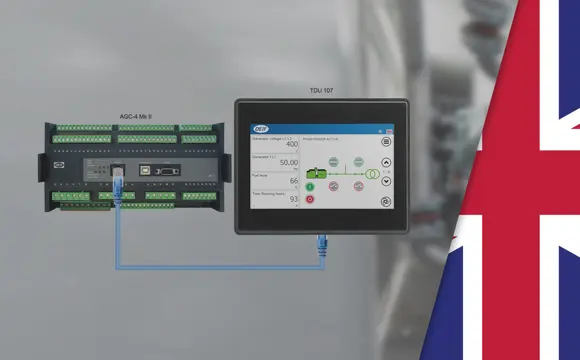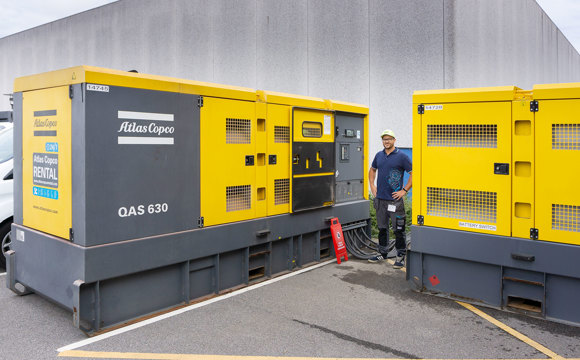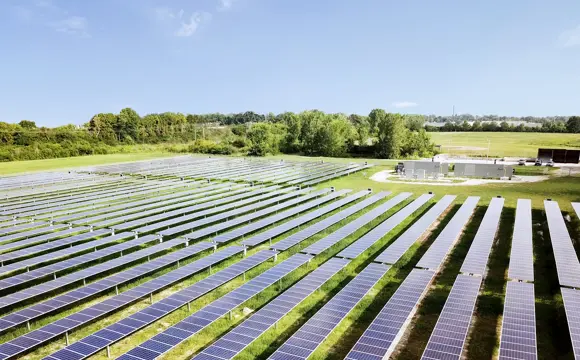Grid code compliance right out of the box
Comply with IEEE 1547 – 2018, EN 50549, VDE-AR-N 4105/4110 and other grid codes with the DEIF AGC-4 Mk II
Develop a platform for safe and stable power production anywhere with the DEIF AGC-4 Mk II. The controller can be specified for compliance with IEEE 1547TM – 2018 EN 50549, VDE-AR-N 4105/4110 and other grid codes, with no need for additional controllers or protections, for the US, Canada, European and other power markets.
The rise in sustainable power generation and transmission has made grid codes more important than ever—and compliance is paramount for power producers and asset owners. Read more about the critical importance of grid codes in this blog post on deif.com.

Built for compliance
_______________________
The AGC-4 Mk II features a DEIF engineered software framework that you can fine-tune for your application with the built-in parameters and DEIF can provide extensive support if needed.

Global solution, no extras needed
_________________________
With the proven AGC-4 Mk II, you don’t need additional controllers or protections to comply with a long list of international grid codes

Future readiness
_________________________
The AGC-4 Mk II is continuously updated to comply with evolving grid codes, preparing you for a future that will see an increased share of renewables and decentralized power production.
Working with a grid code that is not on our list?
Considering a controller upgrade?
Need other information?

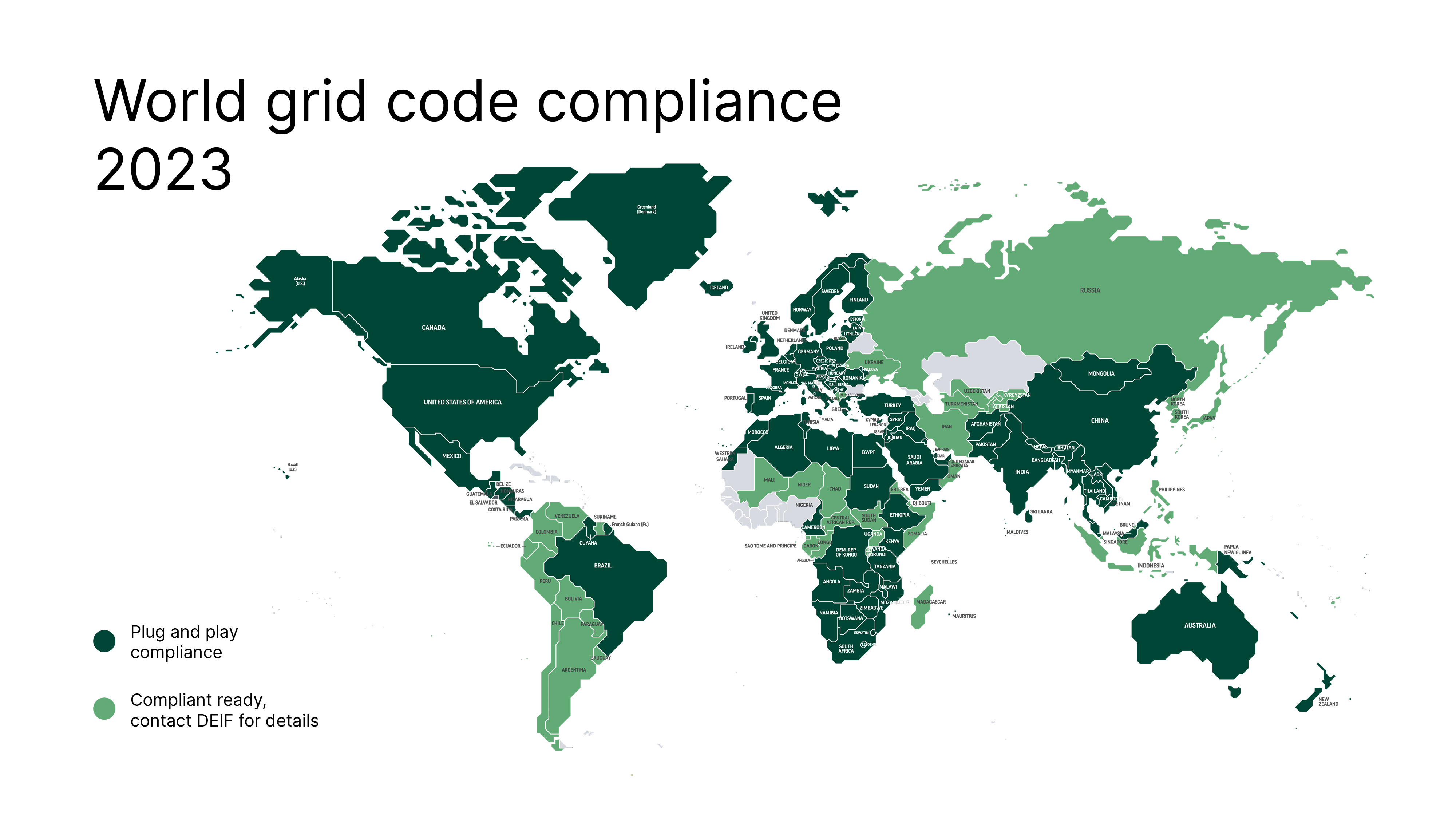
Features developed to support you
With the grid code option, the AGC-4 Mk II offers technical features developed specifically to support power projects with generators parallel to grid, ensuring compliance with international grid codes. Get more details below!
Grid codes specify a predefined power ramp that defines how quickly a power source can ramp up to full power output after synchronizing to the grid. The AGC-4 Mk II can control the ramp of any connected power source.
Reducing grid disturbances
Grid code requirements are intended to lessen disturbances on a grid with several connected power sources. With multiple power-producing devices, it becomes an important consideration how they enter the grid to contribute power. In the past, ramp requirements were less stringent, and power sources could synchronize and dump their load on the grid with very steep ramp times. With AGC-4 Mk II, grid code requirements for ramping are met.
Preventing synchronization when needed
The controller also prevents the power source from connecting and synchronizing with the grid if it is not allowed. When grid frequency increases because more energy is being produced, the AGC-4 Mk II automatically prevents synchronization which would have contributed more energy to the system and exacerbated the frequency issue. When grid frequency drops because of production disturbances, power source synchronization is also prevented because other power sources need to ramp up and stabilize the grid.
The AGC-4 Mk II provides highly accurate synchronization, synchronizing the controlled power source with the grid at an accuracy of 10 mHz. While the old AGC-4 was also capable of achieving an average of +/- 10 mHz of accuracy, it did so within a much narrower temperature range whereas the AGC-4 Mk II delivers consistently accurate synchronization performance.
Accuracy reduces grid disturbances
Accurate synchronization means less impact on the grid when the power source is connected, as the AC waveforms can be approximated very closely to one another. This reduces fluctuations and disturbances for your customers. The accurate performance of the AGC-4 Mk II is possible thanks to its powerful processors.
The AGC-4 Mk II supports various communication protocols that can be used in conjunction with grid code compliance. Not all grid codes are specific when it comes to type of protocols.
The American grid code IEEE 1547TM – 2018 requires power producers to use one of three mandated standard communication protocols to interface with the grid. The AGC-4 Mk II uses the SunSpec Modbus protocol which enables multi-vendor interoperability for manufacturers of solar inverters, energy storage devices, trackers, meters, and other devices.
Logical choice for PV operators
We consider the SunSpec Modbus protocol to be the market leader in green and renewable energy. The protocol is a logical choice for power producers and microgrids that rely on PV plants. It is continuously updated and covers all solar inverters and many other commercially available distributed energy resources (DERs).
DEIF is a member of the SunSpec Alliance.
The AGC-4 Mk II is able to limit reactive power production relative to actual power production. In this way, the controller not only contributes to grid stability according to the grid code in question; it protects the generators that parallel with the grid—a very important benefit for equipment owners who need to ensure stable grid support and protect their own assets in the process.
Easy and flexible configuration
The reactive power limiting feature is based on the actual steady-state reactive power capability curve of the connected generator and can be configured in relation to active power (P/Q diagram) or apparent power (S/Q diagram). Using the utility software of the AGC-4 Mk II, the user can easily define curves for importing and exporting reactive power, with six coordinates for each curve.
Restricting reference or regulating cos phi
If the set point for reactive power is outside the limiting curve, the controller restricts the reference to the regulator. When the reactive power set point moves inside the limiting curve, the controller regulates reactive power (or cos phi). Protections can also be activated to disconnect the generator from the grid, and alarms can be configured for exceeding the capability curve under or over the excitation limit.
And more.....
Product videos
Cases
-
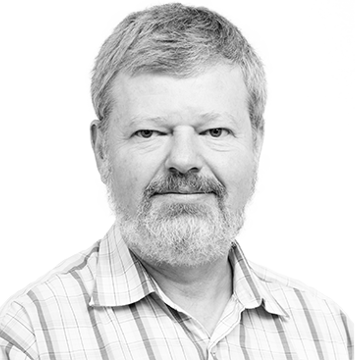
Contact us to discuss your options
- 90 years of energy pioneering
- Manufactured at the highest standards
- Superior quality
- Unmatched service and support
- Made in Denmark


